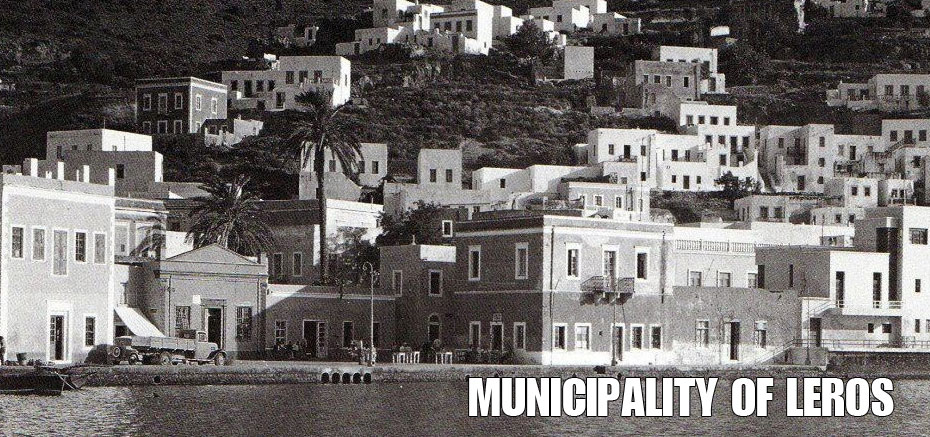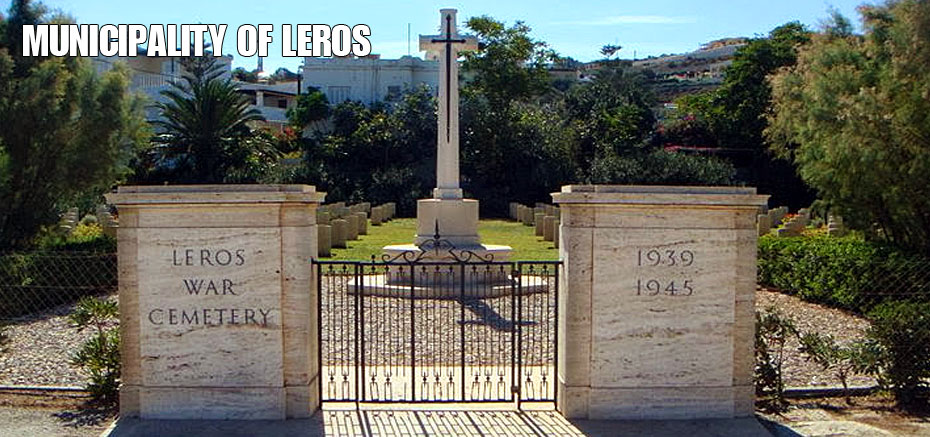Leros, the island of Artemis, Goddess of hunting, presents an historical interest, since there has been demonstrated evidence of life on the island throughout all historic periods.
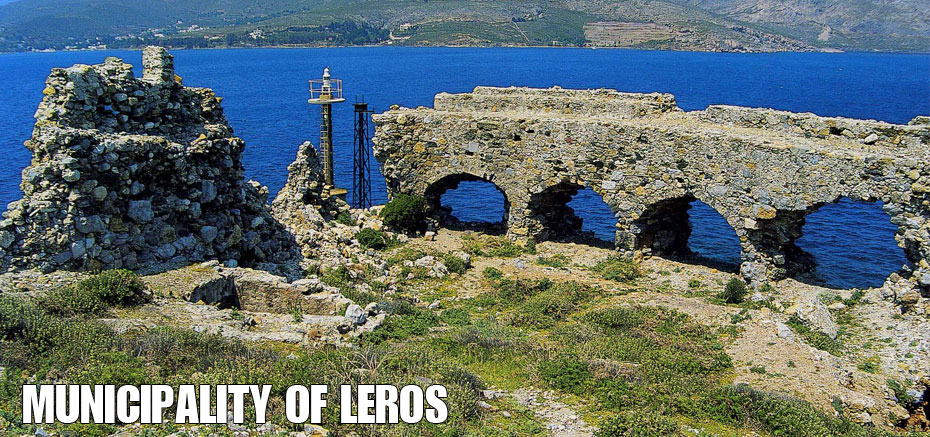
Archaeological excavations and findings have brought this to light. Some human remains were un-earthed from a Neolithic settlement in Partheni. Excavations of recent years support the theory that the ancient town of Leros was near the harbour of Agia Marina. Several ancient writers have referred to the presence of an ancient temple of the Virgin Artemis in Partheni. It is believed that this temple lies presently under the ruins of an early Christian Byzantine church in the area.
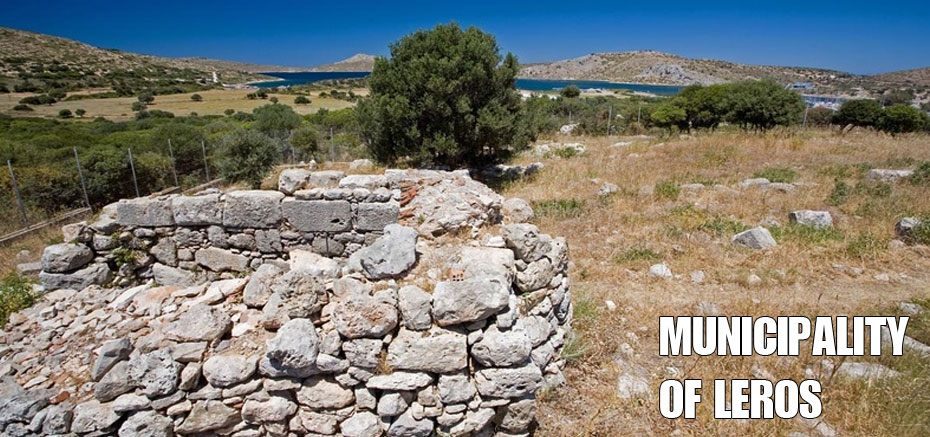
Furthermore, coins and tombs with familiar Macedonian names from other regions reveal a constant, historic course from the Classic to the Hellenistic periods.
The history of Leros through the passage of the 20th century is linked with the history of Greece in the last 100 years. The Ottoman Empire, the Italian occupation, the Battle of Leros, the German occupation, the English domination, the Royal Technical schools, camps of political prisoners (Partheni-St.George), the Psychiatric Hospital, refugees and economic migrants of the last decade.
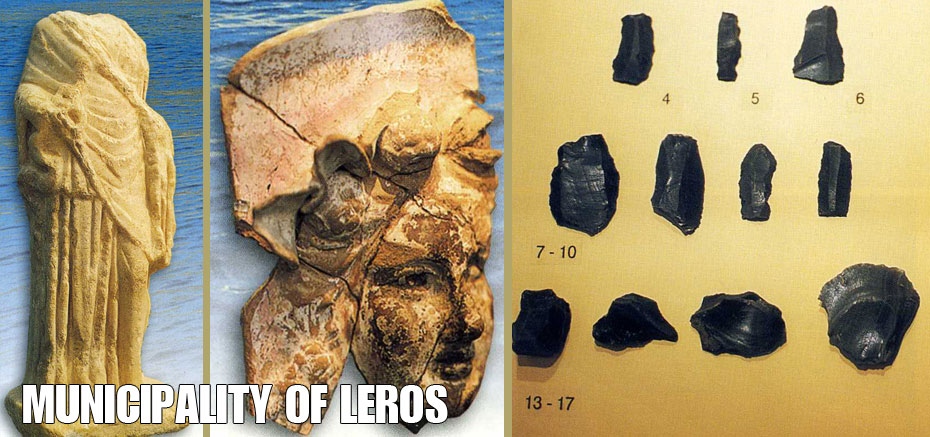
Pages of history are filled by the silence of the dead and liberal 'wronged' souls. Unique architectural buildings and rich underwater findings, both on land and at the sea bottom, are waiting to narrate its story. The visitor of Leros is the traveler who dives into the paths of history and becomes a participant of an unrepeatable authentic experience. Put on your 'masks' and discover with us the past and our future...
Leros in the Antiquity
In the ancient times Leros and Kalymnos were called Kalyndia. The name Leros is presumed to come from the word “levros” which means smooth, because, unlike the mountainous and rocky Kalymnos, Leros has a smooth and fertile soil.
Leros was inhabited since the 3rd millennium BC. The first inhabitants were Carians, Leleges, Phoenicians and Cretans (Minoans). Leros like all the Dodecanese, participated in the Trojan War.
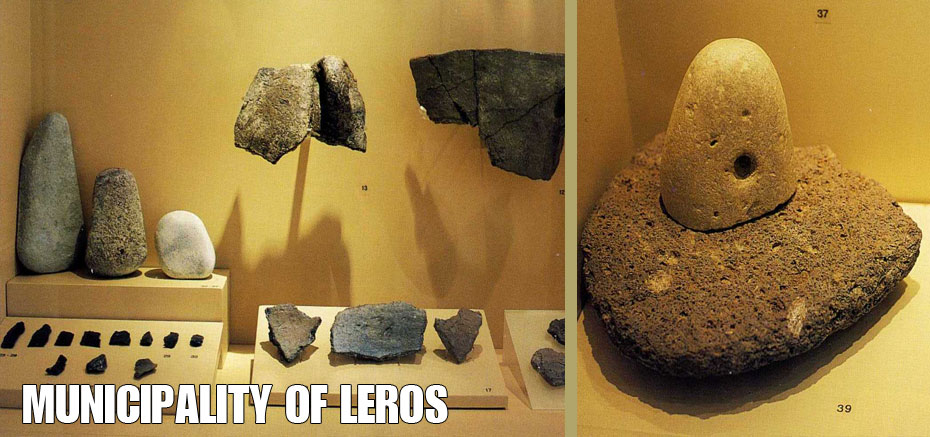
In the 11th century BC the Dorian settled and in the 6th century the Ionians came from Miletus, who according to Herodotus, brought a new culture to the island. This very important period ended in 454 BC with the conquest of the region by the Persians.
After the defeat to the Persians, Leros participated in the Athenian League. In the years that followed, Leros changed rulers until it was liberated from the Persians by Alexander the Great, whose presence marks the transition from the classical to the Hellenistic era, proved by tombstones with Macedonian names and coins.
In Roman times the strategic importance of the island was confirmed by Plutarch. In the main village of the island, at that time called Leros and and located at today's Agia Marina, are remains of the Roman fort 'Broutzi ", as well as ruins of an aqueduct with arched stonework and architectural parts of a temple, probably dedicated to Asclepius.
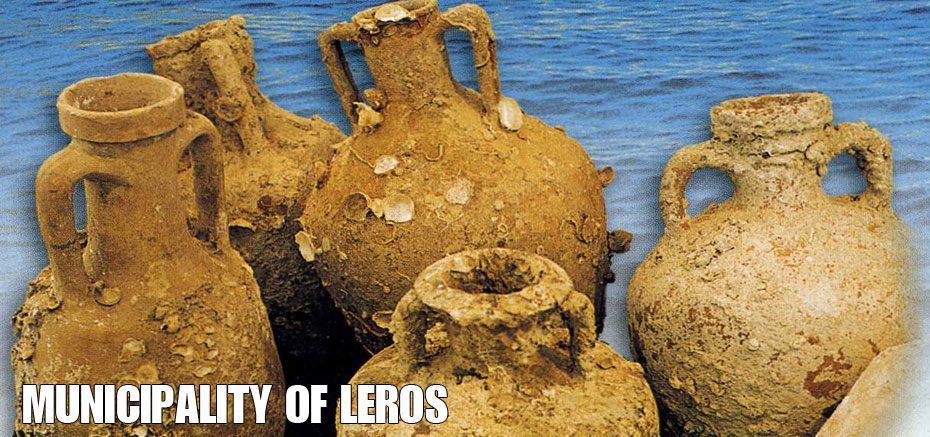
Leros, due to Byzantine period (at the end of third century and after) has remarkable samples of ecclesiastic architecture and fortifications. During this period, the castle of Panteli was built. It is the most important medieval monument of the island and overlooks the settlements of Agia Marina and Platanos. It has a remarkable view over the Aegean. You can see until today the three precincts of the castle (the two internal are dated before 1087). The church of Our Virgin Mary at the Castle was built in the late 17th century. It is accessible via traditional stairs and modern road.
On 1309, the Knights of St. John of Rhodes conquered Leros, which constituted a part of the Province of Kos combined with seven other islands. The St. John’s battalion repaired and modified the Fort of Leros between the years 1300 to 1511. In January 1523, Leros surrenders to the Ottomans. Sultan Suleiman grants the privilege of self-administration and self-rule to the people of the Dodecanese, except those of Rhodes and Kos.
At the village Platanos, until mid last century, important aqueduct discoveries of the decade in 1730 were saved, built on the ruins of the Roman aqueduct that brought water from the source of Paliaskloupi Meroviglia to the city. In 1887 it stopped to operate and was demolished. In 1309 Leros was occupied by the Knights of St. John of Rhodes, who ruled despotically until 1523.
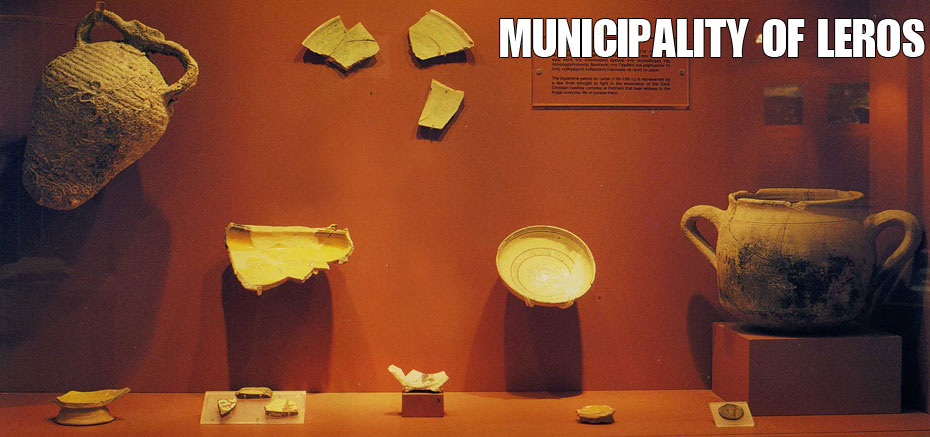
During this period Leros was used as a place of exile. In 1523 Leros was enslaved by the Turks but maintained a relative independence, keeping privileges as autonomy and self-government by paying taxes to the sultan.
In 1821 after the Revolution, Leros enabled by the autonomy it had from the Turkish power, took an active part in the Greek Revolution with local warlords Krasouzis, Tourkomanolis, Chatzimanolis, and it became part of the Greek state, as all the Dodecanese.
In 1830, Leros is part of the Greek State, until the borders of the newly-established state were set. This was declared by the London Deed of the 3rd February, 1830. Later, the protector forces hand-over the Dodecanese to Turkey.
But, by the London Protocol of 1830, the Dodecanese islands were granted to Turkey again and Leros falls back to the Turkish occupation.
Italian Occupation
On May 12 1912, during the Italian-Turkish War, a landing contingent ship "St. Mark" Leros raised in Leros the Italian flag. Commander of the island at that time became Lieutenant Gramatika.
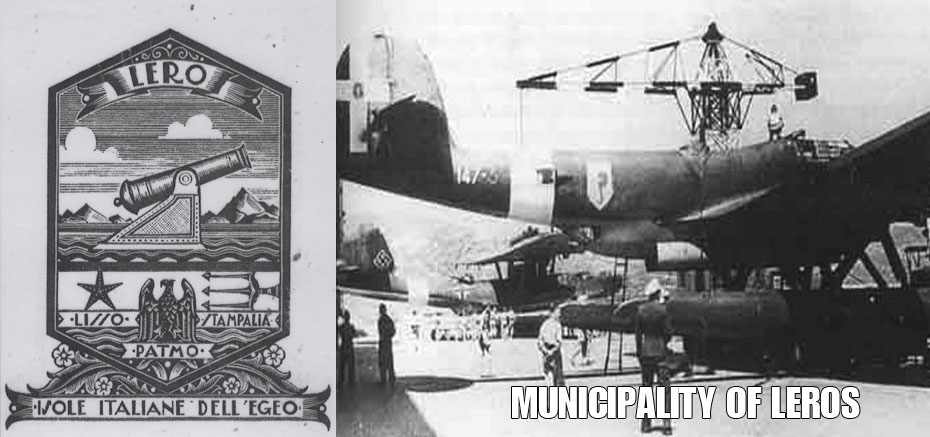
On 13th May 1912, Leros is occupied by the Italians. The Italian “Government’s Possession of the Islands” enforces city-planning for Lakki and converts it into a military port. At the same time, the island’s armament begins and by 1930, 26 permanent batteries had been built with a total of 115 cannons. Further, the Navy Base with personnel numbering 6,000 people is established, while an airport at Agios Gerogios is being built.
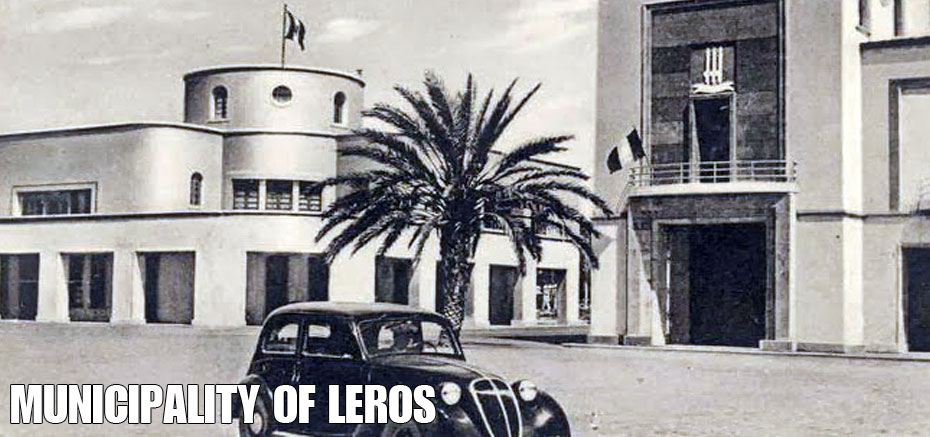
From 1916 to 1918, the British used Leros as a naval base. By pact between Venizelos-Tittoni the island would return to Greece. The agreement was never ratified by the Italian parliament and languished after the Minor Asia catastrophe. The Treaty of Lausanne confirmed the Dodecanese as Italian property.
After 28 October 1922, the Italian Fascist regime actively attempted to “italianate” the Dodecanese.
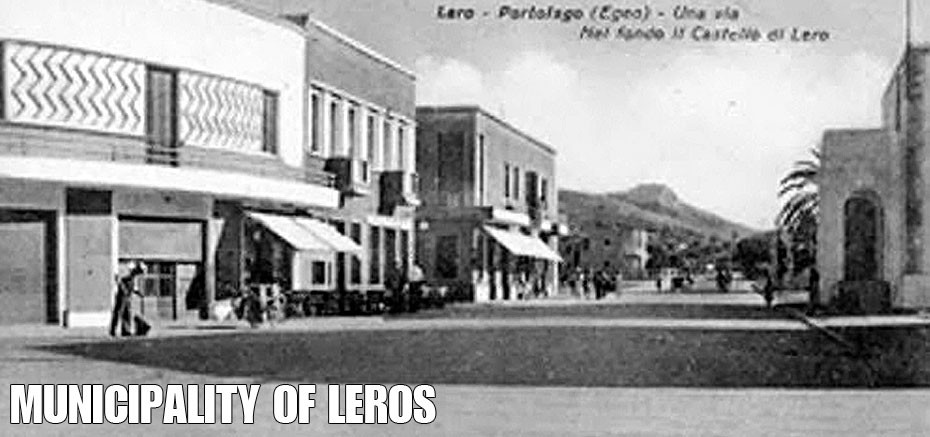
At the end of 1936, these efforts were intensified by the Italian occupiers with a series of decrees regarding education (abolition of Greek schools and placing them under the control and administration of the Italian authorities), the compulsory learning of Italian language, prohibiting the exercise of professions such as doctor's, lawyer who hadn’t studied at Italian universities. De Vecchi was the military and political commander of Dodecanese during that period.
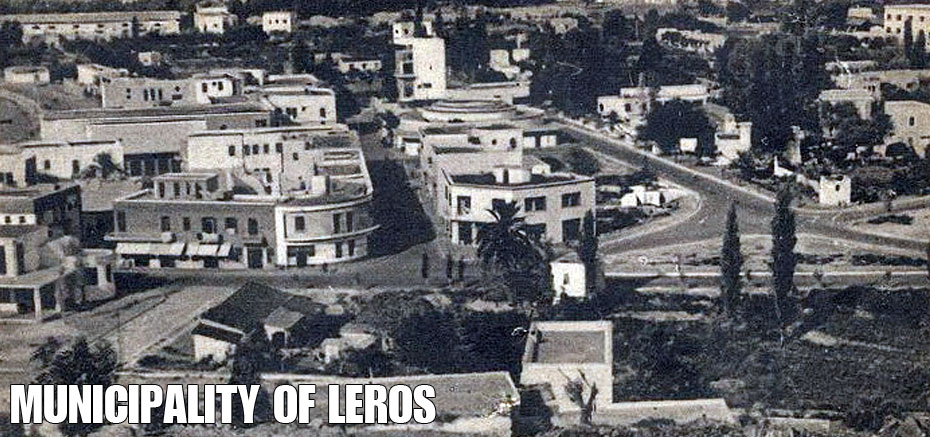
Mussolini highlighted the island as a base of utmost importance for the Italian dominance in the area, because of its strategic geographical position, combined with Lakki being the largest natural harbor in the Eastern side of the Mediterranean Sea. The Italian intervention in the island is catalytic. The mountains, military installations and a large part of Leros are announced military zone.
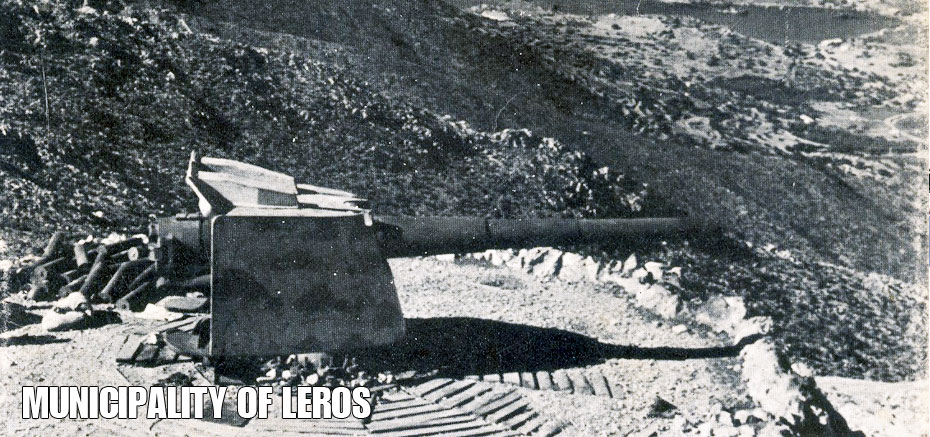
In this period, the main road axis with side tree planting of eucalyptus trees is constructed. In Lakki a new city with impressive buildings and infrastructure is created, its name is ‘Porto Lagos’. Today it is one of the most representative examples of Italian rationalism.
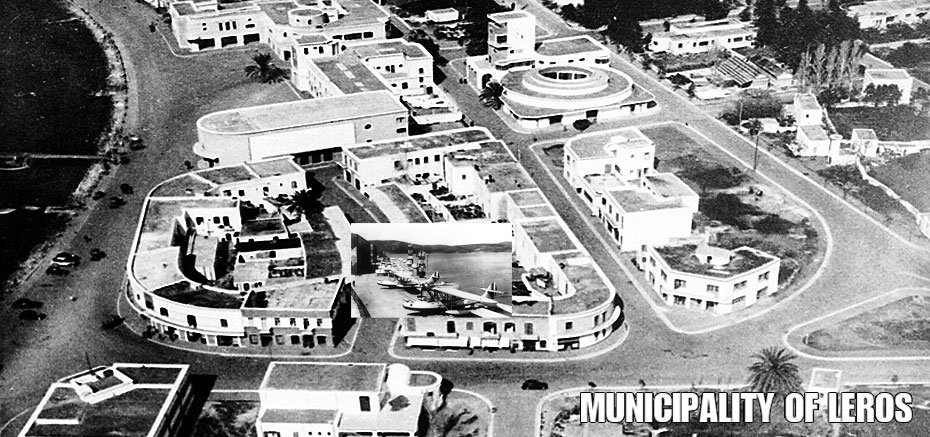
During the 31 years that the Italians remained in Leros, the fortification of Leros, as well as the construction of a major naval base at Lakki, ensured the Italian control of a region (the Aegean, the Dardanelles and the Middle East), that was vital to the Allies .
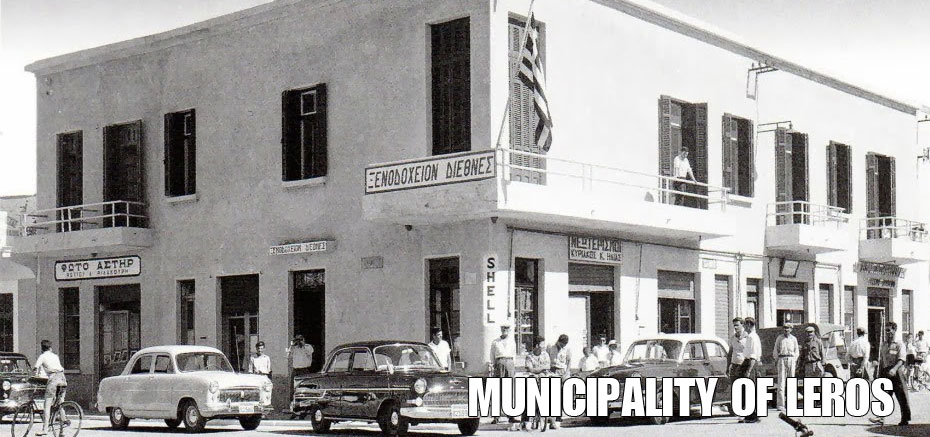
The legacy of this period remained on the island in the form of the modern town of Lakki, with its city plan and the important public and private buildings. Today, despite the decay of time, visitors can walk around the spacious streets and admire the constructions of a particular era and architectural style. Such buildings are the cyclical market with the clock, the complex of cinema theater-hotel Roma, the City Hall complex and private houses etc.
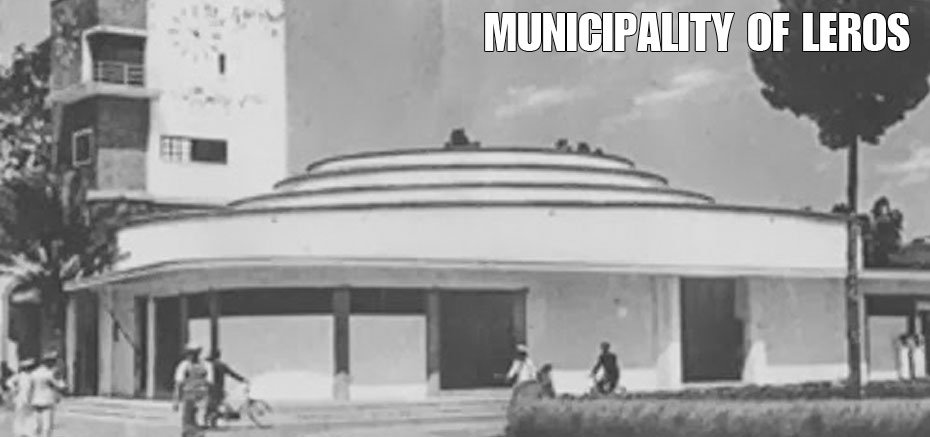
Leros Battle
On 3rd September 1943, Italy surrenders and British soldiers land on the island. The Battle of Leros, from September to November 1943, follows. During the battle, 190 German air raids take place on the island causing great distruction to the town of Leros as well as the Castle.
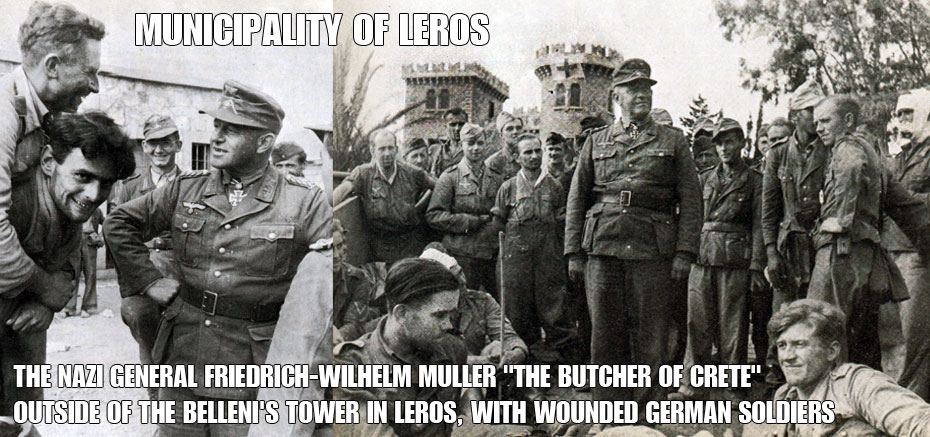
In November 1943, while the Greek mainland was already occupied for years, a special operation of the German army was completed successfully! It was the last victory of the Germans and the final defeat of the allies. It was the battle of Leros.
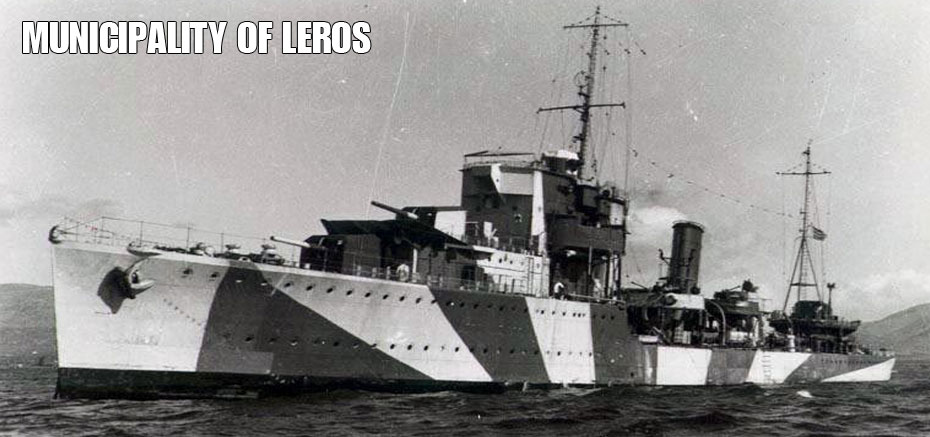
The battle of Leros begins with the bombing of the Greek destroyer ship “QUEEN OLGA” and British destroyer "HMS Intrepid" (D10).
During those days, “QUEEN OLGA” (Vasilissa Olga) under her captain, Lieutenant commander G. Blessas, transported members of the Long Range Desert Group - LRDG (who was a reconnaissance and raiding unit of the British Army during the Second World War), to Leros island together with the British destroyer "HMS Intrepid", but on 26 September, those two glorious ships was attacked by 25 Junkers Ju 88 bombers in the Gulf of Lakki in Leros.
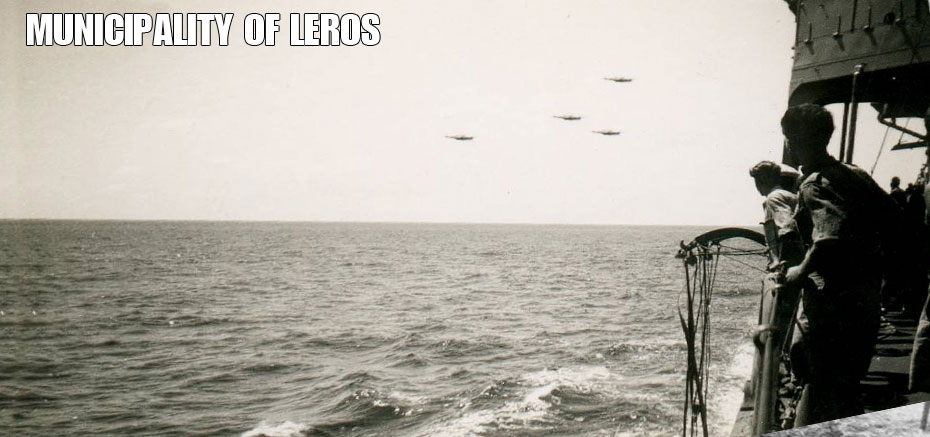
Both destroyers was at anchor in the bay of Lakki of Leros island and was sunk (in the bay Lakki), after the first systematic air attack by German aircrafts JU-88.
The Greek destroyer "Queen Olga" was sunk a few hour after the german air attack, on September 26 of 1943.
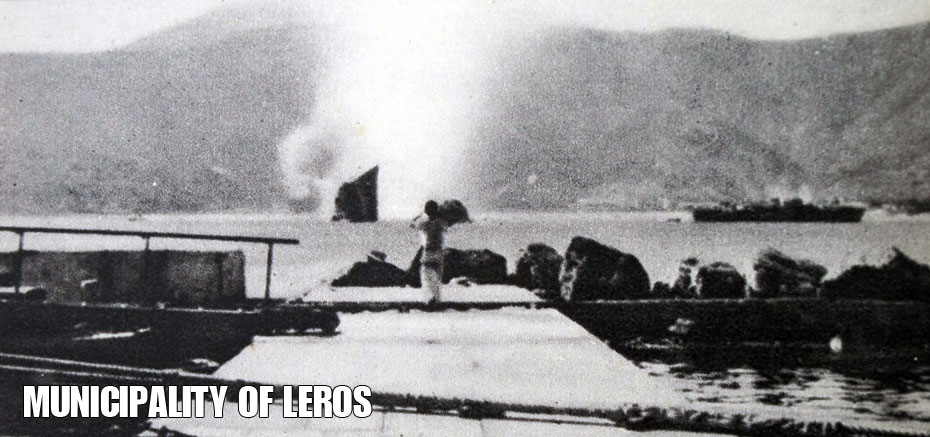
The British destroyer "HMS Intrepid" under the command of Commander Charles de Winton Kitcat was sunk because of it's serious damages, the next day, on September 27 1943. After receiving two hits (September 26 1943), she capsized and 15 men of her crew died.
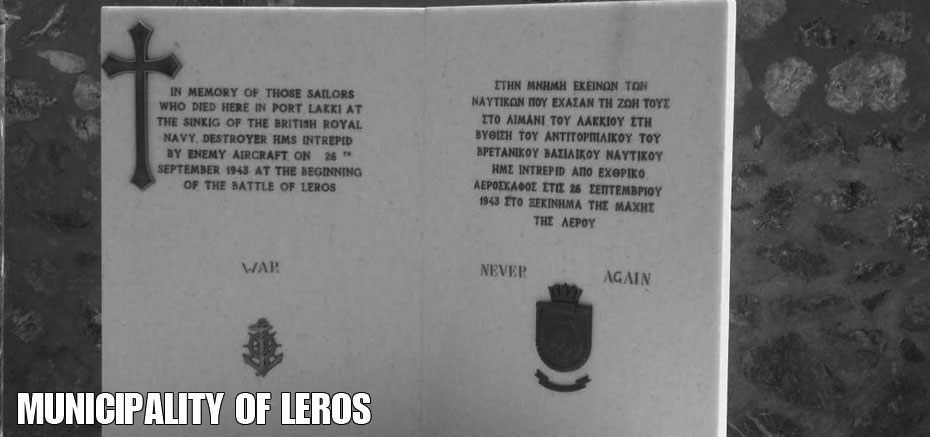
The captain of "QUEEN OLGA" Lieutenant commander G. Blessas, 6 officers, 65 other crew members and eight civilians perished with the ship...
Two Memorial monuments has been erected in Lakki in honour of the glorious ships "QUEEN OLGA" and "HMS INTREPID" and the honored crew of both ships.
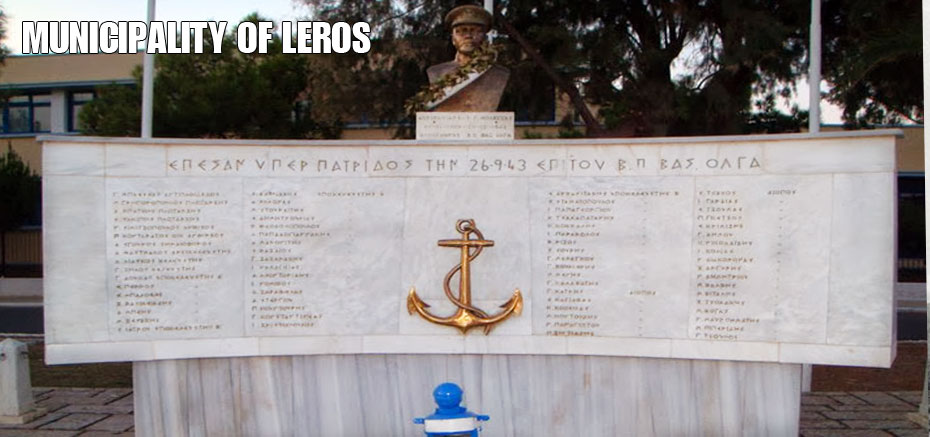
During the next days the airstrikes continue, aeronautical facilities are bombed, and the Italian destroyer «Euro» sinks. On the 3rd of October, the Germans occupy the island of Kos and all British hopes for an airport in the Aegean are gone.
On the 5th of October the Italian minesweeper "Legnano" perishes after an airstrike and at the 6th the refrigerator ship "Ivorea". The same day, the British withdraw their forces from the island of Kalymnos, which will be occupied by the Germans immediately the next day. On 8 October the Italian destroyer «Volta» withdraws, in an attempt to escape from the airstrikes in Leros, but by mistake it is bombarded by British gunboats and suffers great damage. Shortly afterwards the German bombers locate it and finish it off.
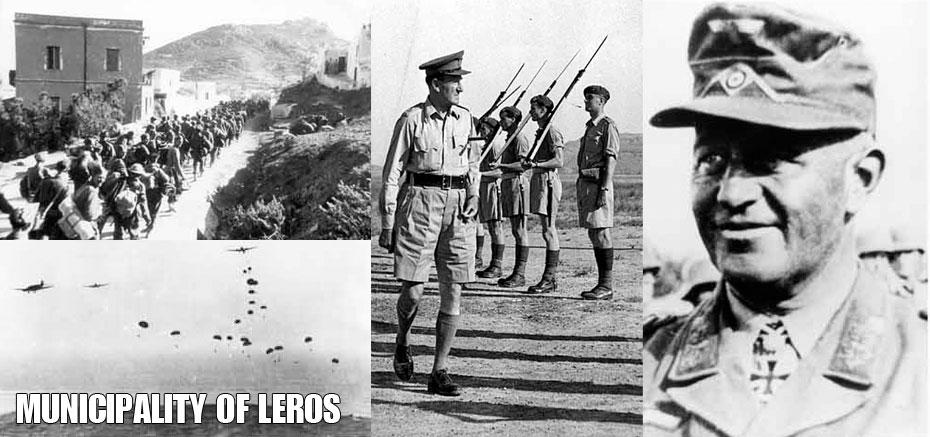
On the 3rd of October, the Germans occupy the island of Kos and all British hopes for an airport in the Aegean are gone.
On the 5th of October the Italian minesweeper "Legnano" perishes after an airstrike and at the 6th the refrigerator ship "Ivorea". The same day, the British withdraw their forces from the island of Kalymnos, which will be occupied by the Germans immediately the next day.
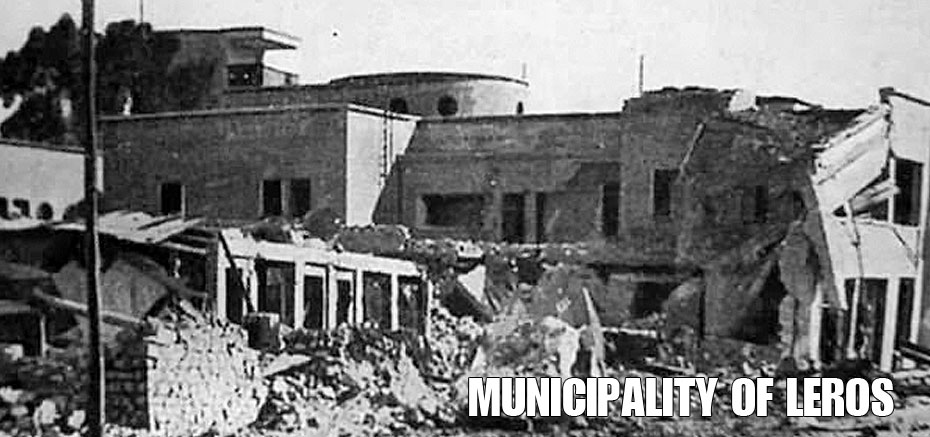
On October 9 populated areas in Leros are bombed by planes. Minesweeper «Azio» suffers several damages, the torpedo boat "MS 26" strands in Cape Pano Zymi and is abandoned. On 22 October the Germans occupy Astypalaia. At the 25th of the same month, the torpedo boat "MS 15" sinks at Lakki after an airstrike. From the 1st until the 6th of November the air raids cease.
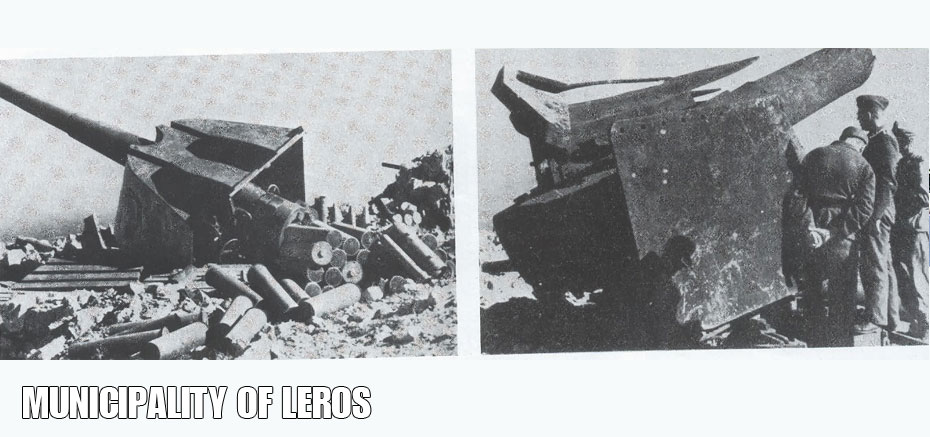
On November 5th General Hull replaces commander Britorius and undertakes the command of the British armed forces in the Aegean. On November 7th air raids start again with great intensity. The 8th of the same month a third British battalion arrives - fierce airstrikes follow. With General Mueller as Commander of the German forces, the enemy landings start on the morning of 12 November. The Germans succeed despite the resistance they face. The situation is further complicated for the defenders by German paratroopers.
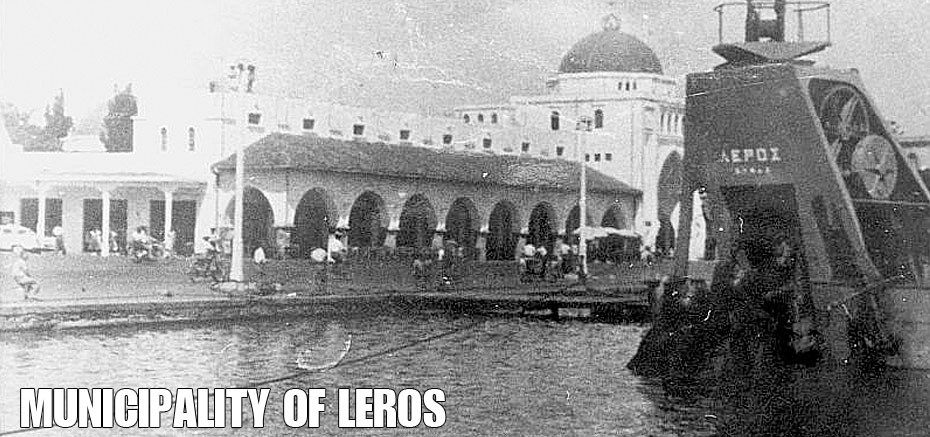
On November 13th the artillery battery on Pityki mountain is occupied and on the 15th the Venetian fortress of Leros. On the afternoon of November 16, an English officer transfers the orders to cease all military activity, because the British administration is surrounded, beaten and surrenders. The Germans execute some Italian officers and begin to capture English and Italian prisoners. The Battle of Leros is over ...
OVERALL PICTURE OF THE WAR
The battle of Leros lasted 52 days. On 15 November 1943 Leros had about 25.479 people on its territory! 8000 Italians, about 3800 British, 2500 Germans and the population of Leros was 10.979 people. The British had about 250 casualties, 3300 men were captured and 250 escaped. The Italians had about 400 men killed, 12 officers were executed, 5351 prisoners and some 2000 managed to escape. From the Lerians 15 were killed, 164 missing and the Greek Navy suffered 71 casualties. The Germans lost 520 men.
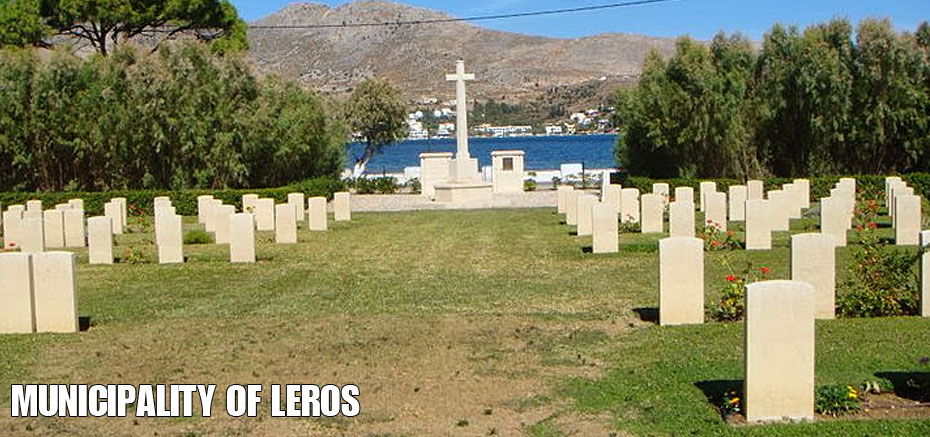
Due to the very important battle that took place on the island of Leros during the Second World War, the sea around the island and the island itself is full of remains and shipwrecks that make the island of Leros a unique museum!
Postwar Period
After the German capitulation, Leros will remain for a while under British administration. On 31 December 1947 in Platanos, the English flag will be replaced by the Greek.
The incorporation of the island to Greece will be officially celebrated on 7 March 1948.
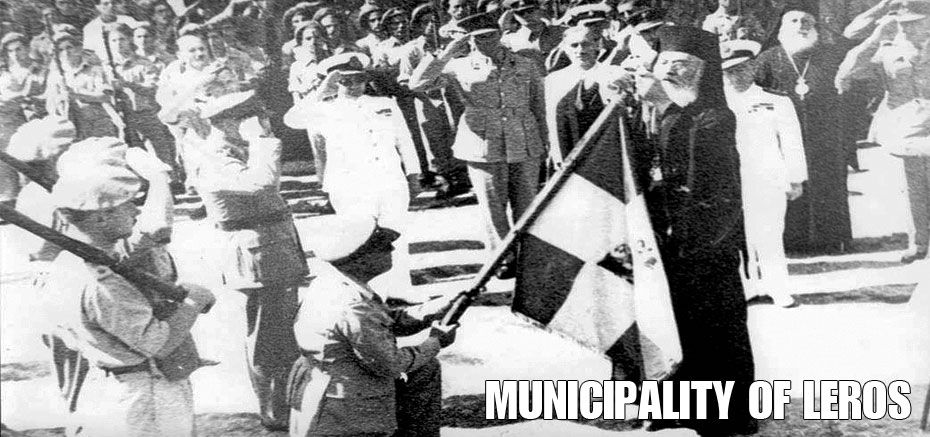
During the postwar years, Greek governments have used many of the buildings on the island for several reasons.
In 1949, the so-called "Royal Schools" were established in a section of abandoned Italian barracks. The "Royal Schools", was a center of national education of young rebels and children, who for several reasons were found in the civil war without family.
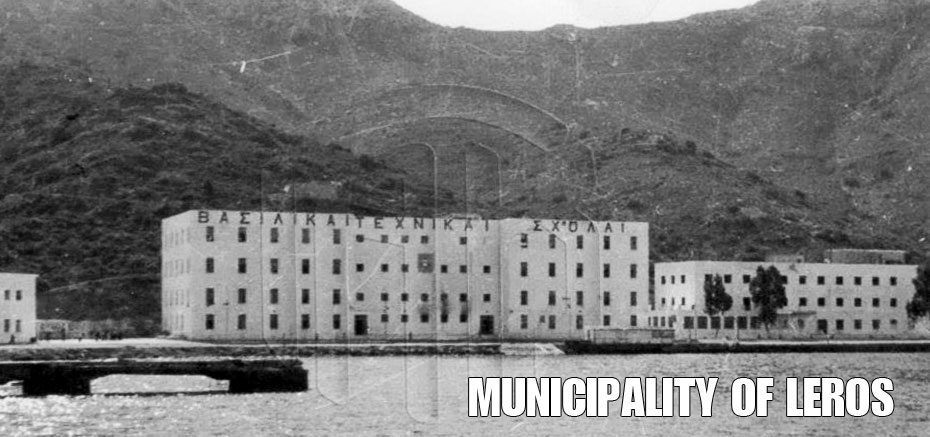
Apart from learning some art for future professional employment, there has been an effort for ideological and political adjustment in the name of the then official doctrine, Anticommunism. About 16,000 young people passed from the “Royal Schools" of Leros, living in conditions of discipline, while approximately 200 people from the local population were working as instructors in various arts and for the schools maintenance. Their operation lasted, with dwindling course until December 1964 when the last students were graduated.
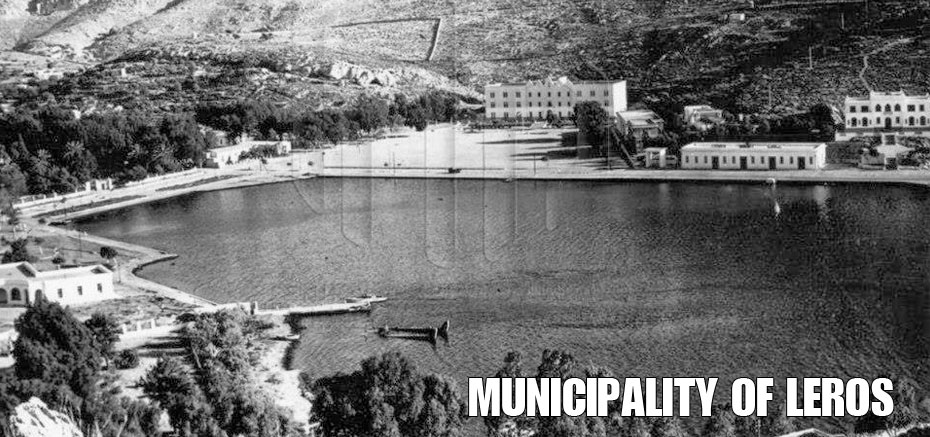
According to Royal Decree of 18/03/1957, the ‘Psychopaths Colony’ is established in Leros and is being accommodated in buildings of the Italian Naval Base at location "Corner" in Lakki. Later, due to the increasing influx of patients the buildings of the former Italian Air Base in area ‘Lepida’ will be used as well.
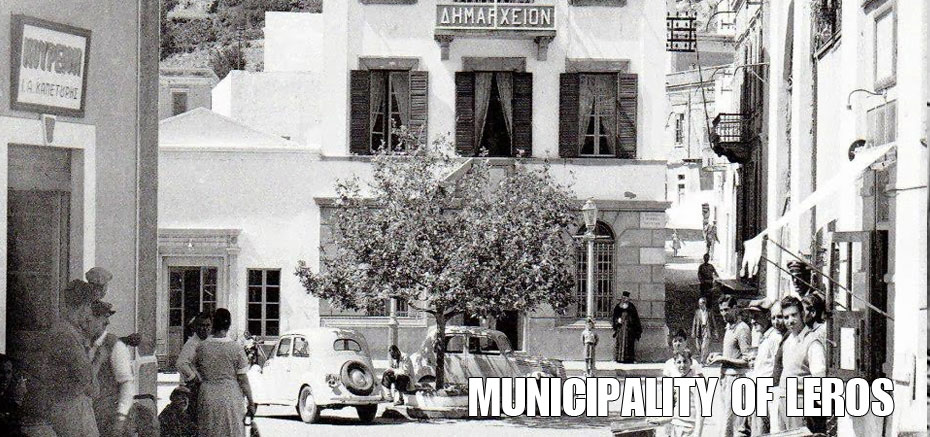
In 1965 the Institution of the ‘Psychopaths Colony’ is being amended, is renamed as "Leros Psychiatric Hospital 'and provides 2,650 beds and 625 employees.
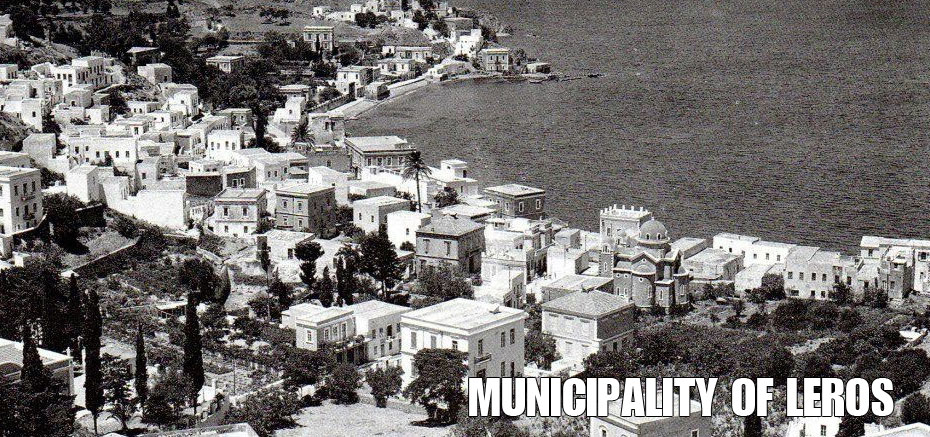
During the dictatorship, from April 1967 until July 1974, Leros becomes a place of concentration camps of political prisoners, rivals of the dictatorship, mainly leftists. From September 1967, the political prisoners in the camps of St. George and Partheni, but also in the displacements at Agia Marina, will approach the 1/3 of the total number of political prisoners of the dictatorship (7900).
